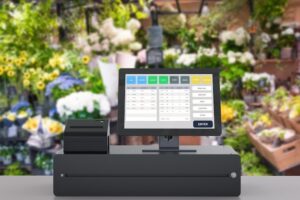Understanding Contactor with Overload Relay: A Complete Guide
In the realm of electrical engineering and automation, contactors and relays play a crucial role in the operation and protection...
In the realm of electrical engineering and automation, contactors and relays play a crucial role in the operation and protection of electric circuits, particularly motor-driven systems. Among these, a contactor with overload relay is a powerful combination that ensures efficient motor control while providing essential protection against potential electrical hazards. This guide will explore the concept, components, functions, applications, and benefits of using a contactor integrated with an overload relay.
What is a Contactor?
A contactor is an electrically controlled switch used for switching an electrical power circuit. Unlike relays, which are typically used for low-power applications, contactors are designed to handle higher currents and are commonly used in applications involving electric motors, lighting, heating, and other electrical loads.
Contactors are operated by a control circuit that energizes the coil, which in turn closes or opens the contacts to control the flow of electricity in the power circuit. These devices are known for their ability to switch large loads safely and efficiently, making them indispensable in industrial and commercial applications.

What is an Overload Relay?
An overload relay is a protective device used in electrical systems to prevent damage to motors due to excessive current or overheating. It monitors the current flowing to the motor and trips the circuit if the current exceeds a preset limit for a specific duration. This prevents motor winding damage and prolongs the equipment’s life.
Overload relays come in two primary types:
- Thermal overload relays – use bimetallic strips that bend when heated by overcurrent, triggering the trip mechanism.
- Electronic overload relays – use current transformers and microprocessors for more accurate and adjustable protection.
Combining a Contactor with Overload Relay
When used together, a contactor with overload relay forms a motor starter unit that offers both control and protection. The contactor handles the switching of power to the motor, while the overload relay safeguards the motor from overheating due to prolonged overcurrent situations.
This integration is essential in motor control centers (MCCs) and automation panels. The overload relay is typically mounted directly onto the contactor, creating a compact and effective control unit.
Key Components of a Contactor with Overload Relay
To better understand how a contactor with overload relay functions, let’s explore its main components:
- Contactor Coil: Energized to create a magnetic field that pulls the contacts together.
- Main Contacts: Carry the load current; typically made from silver alloys for durability.
- Auxiliary Contacts: Used for control logic and signaling purposes.
- Overload Relay Unit: Connected in series with the load and monitor current.
- Reset Mechanism: Allows manual or automatic resetting after a trip.
- Trip Mechanism: Disengages the contactor when an overload is detected.
How It Works
Here’s a step-by-step explanation of the operation:
- Start Command: The control circuit energizes the contactor coil.
- Contact Closure: The magnetic field pulls in the main contacts, allowing current to flow to the motor.
- Current Monitoring: The overload relay continuously monitors the current to the motor.
- Overload Detection: If the current exceeds the rated value for too long, the overload relay trips.
- Disconnection: The trip mechanism opens the contactor, stopping the motor.
- Reset: The system can be reset manually or automatically, depending on the relay settings.
Applications of Contactors and Relays
The combined use of contactors and relays is common across a wide range of industries. Some of the most typical applications include:
- Motor Starters: To start and stop motors safely.
- Lighting Control: Especially in large commercial or industrial buildings.
- HVAC Systems: For switching compressors, fans, and pumps.
- Automation Systems: Used in PLC-controlled panels for switching and interlocking.
- Pumps and Compressors: For controlling heavy-duty equipment with frequent on-off operations.
Benefits of Using a Contactor with Overload Relay
The combination of a contactor and an overload relay offers several advantages:
1. Enhanced Motor Protection
The overload relay protects the motor from damage caused by excessive current. This helps in reducing downtime and maintenance costs.
2. Automation Friendly
Contactors can be controlled remotely and integrated into automated control systems, making them ideal for modern industrial applications.
3. Safe Switching
Contactors allow for the safe switching of high-current circuits, reducing the risk of electrical arcs and operator hazards.
4. Compact Design
Mounting the overload relay directly onto the contactor saves space and simplifies wiring in control panels.
5. Customizable Settings
Overload relays come with adjustable settings to match motor specifications, ensuring tailored protection for each application.

Factors to Consider When Choosing a Contactor with Overload Relay
Selecting the right contactor with overload relay requires evaluating the specific requirements of your system. Here are key factors to keep in mind:
- Motor Voltage and Current Ratings
- Type of Load (Resistive or Inductive)
- Ambient Temperature Conditions
- Reset Mode (Manual or Auto)
- Mounting Type and Panel Space
- Brand Reliability and Support
Choosing reliable and high-quality components ensures long-term efficiency and safety in your electrical installations.
Installation and Maintenance Tips
- Proper Sizing: Always choose a contactor and relay rated for your motor’s full-load current.
- Tight Connections: Loose connections can lead to overheating and failure.
- Periodic Testing: Check the operation of the relay and the contactor regularly.
- Environment Protection: Use enclosures in dusty or humid environments.
- Label Wiring: Ensure all wiring is marked to aid in troubleshooting and servicing.
Common Issues and Troubleshooting
- Contactor Chattering: This may be due to low voltage or coil issues.
- Relay Trip Without Load: This could indicate faulty calibration or a damaged relay.
- Burnt Contacts: Often caused by overloading or arcing—replace immediately.
- Motor Not Starting: Check for coil failure, control voltage, or tripped relay.
Prompt troubleshooting and timely maintenance help maintain system reliability and prevent costly downtimes.
Conclusion
In any modern electrical setup, the combination of a contactor with overload relay offers a dependable solution for controlling and protecting motors. These devices form the backbone of many industrial automation systems, offering reliable switching capabilities alongside thermal protection. Whether you’re managing a simple motor starter or a complex control panel, understanding the role of contactors and relays is essential for safe and efficient operation.
For those seeking top-tier electrical components and expert support, Lauritz Knudsen Electrical and Automation stands out as a trusted provider. With a commitment to quality and innovation, the company offers a wide range of contactors, overload relays, and other automation products designed to meet the demands of today’s industrial and commercial environments.







